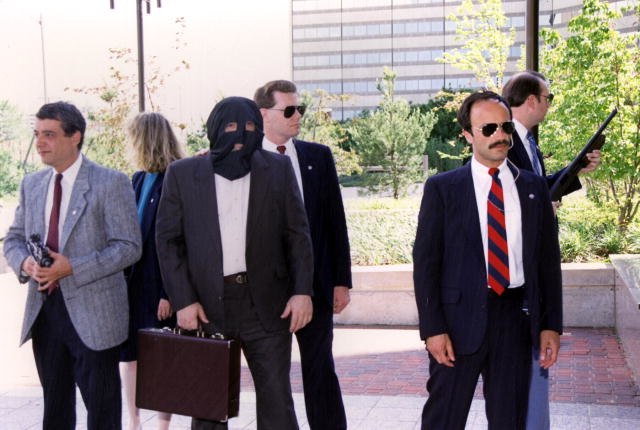By Ragini Sehgal & Hunar Chaudhary

Introduction To The Concept Of Witness
A witness is a person who gives a testimony or has knowledge about a particular event related to a topic of interest. One of the most crucial procedures in the Indian Criminal Justice System is the recording of a witness’s testimony. Witnesses can provide evidence based on what they have seen or what they have heard. Not just laypeople, but also specialists, who are referred to as expert witnesses, act as witnesses. They have particular skill sets that allow them to assist the jury in deciphering any set of factual information. The truthfulness of the evidence given by the witness is of great importance for the proper delivery of justice to the victim. Even a single manipulated statement by a hostile witness can change the direction of the whole case.
Hostile Witness: A critical assessment
The transparency of a witness is of utmost importance for the truthful disposal of justice. But due to certain factors, a witness might turn hostile and might change the evidence given by him in the first place or might give the wrong evidence from the very beginning. The term ‘hostile witness’ first came into light in 1975 while the Supreme Court of India decided Sat Pal v. Delhi Administration case where the court defined ‘hostile witness’ as the witness who testifies for the opposing party or offers adverse testimony to the calling party during direct examination. Witnesses might turn hostile, firstly, because the long and protracted process of trial can lead a witness to forget certain facts about his/her evidence, and the slow justice delivery system can create frustration because of being summoned often. Moreover, the witness is not treated with proper dignity and respect in our country due to which they tend to turn hostile. Many political and social elements can contribute to witness turning hostile like greed for money, pressure from politically or economically influential people, and even death threats. Apart from these, our criminal justice system contributes to discouraging witnesses from becoming truthful and consistent, there being lack of incentives and allowances being provided to the witnesses for going through cumbersome processes of trials. Thus, the witnesses are left with the option of either standing by the truth from the very beginning or turning hostile to save themselves from any sort of harm. Most of the witnesses opt for the latter because of the presence of such loopholes in our faulty justice disposal system. Hostile witnesses affect our society in many ways. Their wrong evidence can lead to criminals walking free in our society which in turn, leads to an increase in the crime rate. It can also lead to justice being denied to a large stratum of our society and the actual victim getting punished in place of the actual culprit. Thus, the current scenarios draw our attention towards the urgent need for bringing into action an efficient witness protection scheme.
A Few Popular Cases Related To Hostile Witnesses
There have been several cases in the past where the witnesses have turned hostile. These cases help to highlight how hostile witnesses leave the cases hanging in the middle and how the lead to justice getting delayed to the victims. These cases also help to highlight how these hostile witnesses have faced the consequences of their actions. The most popular case in this list is that of Jessica Lal. Popular actor Shyan Munshi was the hostile witness in this case. Jessica Lal was a celebrity barmaid living in New Delhi. On the 30th of April 1999, at around 2 a.m., she was shot dead by Manu Sharma. Two witnesses, who stood at the ground, Bina Ramani and her daughter Malini Ramani, told the court that they did see Manu Sharma at the party that night. 19 witnesses turned hostile. Two witnesses faced perjury trial for turning hostile, one of them was Actor Shayan Munshi and the other one was Prem Sagar Manocha. Shyan Munshi and Prem Sagar Manocha faced up to 7 years of imprisonment. Later on, court discharged 17 of the earlier mentioned 19 witnesses. The court asked Delhi Government to evolve a witness protection program in 10 weeks. It was finally in 2010 that Manu Sharma was convicted for murder and was subjected to imprisonment.
Another case was CBI’s Sohrabuddin Fake Encounter case (Rubab Uddin Sheikh vs State Of Gujarat & Ors, 2010). It was a criminal case in Gujrat State. Sohrabuddin was encountered on 26 November 2005. A distinct CBI court exculpated all the 22 accused in the case in the alleged encounter killing of Sohrabuddin and his wife. Police claimed that he was analogous with the global terrorist organization Lashkar-e-Taiba and ISI. A year later on December 26, 2006, Sheikh’s associate Tulsiram Prajapati, a witness to Sheikh’s killing, was also killed in another police encounter shooting. A miraculous turn, in this case, took place in May 2014 when Narendra Modi became the Prime Minister of India, who was related to this case. The Supreme Court stated one judge to superintend the entire case. The first judge Justice Utpat ordered Amit Shah to appear in court. Judge Utpat left the case for unclear reasons in June 2014 and Justice BH Loya replaced him. Justice BH Loya also insisted Shah to appear in court. In December 2014, Justice Loya died in strange circumstances. Justice MB Gosavi replaced Justice BH Loya. The same month, the court discharged Shah from Case. In November 2017, CBI Judge began the trial of 210 witnesses, 92 withdrew or changed their earlier testimony and became hostile. This case becomes significant for highlighting the fact how some political factors lead the witness to turn hostile or even withdraw from the trial process.
Another popular case took place in the year 2013 when self-proclaimed Godman Asaram Bapu was charged with a rape case. In the year 2015, a witness Sudha Pathak turned hostile and just 4 days after her turning hostile, another witness, Kripal Singh was shot dead. In his dying evidence, he gave the police name of some of Asaram’s followers who were responsible for his murder and he also revealed that these persons had also earlier approached him at the court and offered him a hefty bribe to withdraw his evidence. This case shows how influential people can make witnesses turn hostile through their followers. It was only after this case that the Witness Protection Scheme of 2018 was framed by the Union Ministry of Home Affairs.
Recent provisions bought for witness protection in India.
As discussed earlier, in the year 1975, the term ‘hostile witness’ came into being. Since then several cases of witnesses turning hostile came into the scene but it was only in 2003 that a few recommendations were made for witness protection schemes in India. In the year 2000, NDA Government constituted a committee headed by Justice VS Malimath was formed to look into the loopholes of our criminal justice system. In the year 2003, it released its 20 points report with a few points suggesting towards the witness protection scheme. The report condemned the shabby behavior with which the witnesses are treated and asked the judges to step in for cross-examination in case of any harassment done towards the witness. It also recommended that the witnesses should be provided with their allowances the very same day of the recording their evidence, they should be provided with proper seating and resting facilities, they should be treated with dignity and law similar to witness protection law of the US to be implemented in India. In the year 2006, the Law Commission of India, in its 198th report, provide for a draft witness protection law. From time to time the central government has asked state governments to make certain provisions for witness protection as a result of which the ‘Delhi Witness Protection Scheme’ of 2015 came into being. This scheme was a result of ‘State v. Manu Sharma’ case of 2013. Under this scheme, witnesses were divided into 3 categories based on the kinds of threats they faced. Basic security provisions like a police escort to the courtroom, temporary residence with security provisions, and video recording of evidence are provided under this act and separate measures with high security and anonymity of the witness’ identity and location are provided for high-profile complex cases. The most important feature of this act was the creation of witness-protection fund operated by the divisional magistrate with allocations from the state budget, international charity, and receipts from fines imposed on the accused. The act advocated for the creation of ‘Vulnerable Witness Courtrooms’ with live links, one-way mirrors, and screens to separate the passages for the witness and the accused. The scheme provided the witness with an emergency contact number of the SHO of the specified area and also permitted the police to monitor witnesses’ E-mail and telephone calls for security purposes. Not only Delhi but Maharashtra too tabled a bill for Maharashtra Witness Protection and Security Act in the year 2017. The bill provided for the protection of witnesses not just during the trials but also during the investigation stage as well. It provided for the provision of inquiry and investigation based on any complaint filed by the witness to the police or the court if they feel any threat is being posed to them. The bill prescribes a jail term of up to three years or a fine of Rupees 5000 to anyone including the police officials who disclose witnesses’ I’d or address to anyone till the disposal of the case. The bill highlights the importance of fair trial being a part of Article 21 (Right to Life). The bill proposed for the creation of a State Witnesses’ Protection Committee to give directions at district level and other committees and to monitor the protection that is being given to the witness. After several witnesses turned hostile in ‘Aasaram bapu’ case, the Supreme Court approved the enforcement of the Witness Protection Scheme in the year 2018 framed by the Ministry of Home Affairs. A Bench of Justice AK Sikri and S Abdul Nazeer asked the Centre, State, and Union Territories to “enforce” the scheme “in letter and spirit”. The court said,” It shall be the ‘law’ under Article 141/142 of the Constitution, until the enactment of suitable Parliamentary and/or state legislation on the subject.” The important features of this scheme include identifying categories of threat perceptions, preparation of a ‘Threat Analysis Report’ by the head of the police, protective measures like ensuring that the witness and accused do not come face to face during the probe, protection of identity, change of identity, relocation of witnesses, witness to be apprised of the scheme, confidentiality, and preservation of records and recovery of expenses. These measures have improved the status of witness protection laws of India yet there are some problems in these existing laws which need to be rectified.
Problems with witness protection provisions in India
A wide range of proposals have been made by various committees, still there is an urgent need for effective witness protection provisions in India. There are various problems in the existing provisions for witness protection. The first and foremost is the huge number of cases pending to be finalized in our Judicial System. The number of cases and the number of witnesses involved in them makes it practically impossible to protect every witness. The second problem is the lack of funds for making the expenditure for the purpose of witness protection. A handsome amount of money goes into providing bodyguards, transportation, and other security provisions to every witness. Many of the foreign nations provide anonymous identities to the witnesses for their protection but there is no such provision for anonymity of witnesses in India. The witness most often turns hostile in the fear of his/her identity getting revealed to the other party through which the other party can cause potential damage to the person witnessing against them. There is a need to monitor a few activities if the witness for security purposes like applying security cameras or assigning a guard, but this will cause a clear infringement in the Right to Privacy of a person as provided under article 21 of the Indian Constitution. All these problems create a barrier in the way of effective implementation of witness protection schemes in India. The most urgent need for the Judicial System is to make provisions for anonymity of the witness which can bring in great changes in the current witness protection scenario of India.
Conclusion
Many steps have been taken by the Union and the State governments for Witness Protection Schemes in India yet there is a lack of effective implementation of these schemes. The Government should make separate funds for these schemes in the Union Budget. Police and other administrative authorities should redress the complaints by witnesses as early as possible so that they feel protected till the trial continues. Notorious opposition members should be kept under check by the competent authorities. Provisions for ‘Anonymity of witness’ are the urgent need of India’s Criminal Justice System. These certain steps can make big difference in our Criminal Justice System for better delivery of justice.

